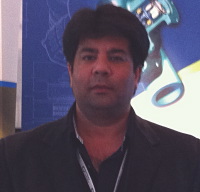
Innovate or Else
By Mike McLeod
General CAD Innovation innovation in CanadaForward-looking conference showcases tools, technologies and practices critical to the future of product development in Canada.
The business conditions keeping manufacturers up at night are all too well known. The dollar at par, increased competition for emerging countries and weak U.S. demand all factor into the malaise plaguing Canadian manufacturing. As a result, they face a new playing field on which simply cutting costs doesn’t guarantee longevity. Instead, they are tasked with finding new ways to boost productivity, slash development time and expand product offerings.
Against this backdrop, Design Engineering and Canadian MetalWorking magazines hosted the inaugural Innovate or Else conference at the Toronto Congress Centre in October. Over the course of the all-day event, Ontario engineering and metalforming industry representatives attended presentations tailored at exploring the cutting edge tools, technologies and processes critical to the future success of each discipline. [For coverage of the MetalWorking track, check out Manufacturing insight – Canadian Metalworking event shines light on novel solutions for manufacturing competitiveness]
For the conference’s keynote speaker, Al Diggins, president and GM of the Excellence in Manufacturing Consortium, the key for manufacturers is to pool their resources and see themselves as a community rather than guarded competitors. Established 23 years ago in Owen Sound, Ontario, the not-for-profit organization is now the largest manufacturing consortium in Canada, which has dedicated itself to facilitating its 900+ members develop toward greater global competitiveness.
“So how do you foster an atmosphere of continuous improvement and innovation?” asked Diggins. “What it’s all about is peer-to-peer networking, an open exchange of expertise and best practices: sharing and stealing legally. What we’ve learned as we’ve grown across Canada is that sharing ideas and helping each other isn’t a normal behaviour; it’s a learned behaviour, and we’ve developed ways to teach our members how to behave this way.”
In 2010, the EMC hosted approximately 1,000 in person peer-to-peer networking events across Ontario and provides comprehensive training events on subjects including lean, quality assurance, safety and other issues key to improving competitiveness. The consortium also leverages the collective intelligence of its members to “crowd source” solutions and provides them for members in the organization’s growing online archive of manufacturing-related forums.
“We provide a place for our manufacturers to go 24/7, 365 days of the year,” Diggins says. “For example, if there’s quality guy who’s in a pickle about something at 2 in the morning in Renfrew, Ontario, he will be able to find an answer to his problem.”
Virtual Product Development
In the first of the day’s presentations, Kerry Saumur, manufacturing sales development director with Autodesk Canada, expanded on Diggins’ theme by focusing on how technology enables engineers and manufacturers to compete and grow in a global economy. According to Saumur, one of the primary barriers for manufacturers to innovate and develop new products is the risks and high cost associated with creating physical prototypes.”
“In today’s day and age, there is a high cost to creating a physical prototype,” he said. “It can cost $100,000 to actually build a car for testing and $4 million for an aeroplane. The high cost comes not only from the materials and manufacturing of the prototype but also the time.”
Instead, he stressed that today’s CAD systems can create digital prototypes that allow companies to conceptualize, model, validate and document new products totally within a digital environment, cutting time to market while driving out costs and inefficiencies from their processes.
“Whether you are doing conceptual design, modeling a product in 3D, validating that design to see if you it will break or creating tech pubs or marketing materials, every thing propagates from a single data starting point,” Saumur said. “The net result of keeping everything in a digital format, is an increase in productivity and innovation in your products because you’re not re-creating the geometry at each step. You’re leveraging what you’ve already done; you’re keeping that intellectual property all the way through and you’re getting to market much faster.”
Similarly, Rohan Bhalla, senior applications analyst for Siemens PLM Software reseller Designfusion, elaborated on the concept of digital design as an efficient method of product development by demonstrating the flexibility and power of “hybrid” modeling systems that allow designers to take advantage of the best of both 3D modeling environments.
“A questions like ‘How do I design faster than my competition with my current design team?’ is a problem plaguing everyone out there,” Bhalla said. “To compete, a lot of customers in the industry are outsourcing their work to design houses so that they can get to market faster. The problem is that any time you get those designs from the design houses, any benefit you might have gained is quickly lost if you have to make changes to those designs.”
Using hybrid parametric/explicit modeling software, Bhalla demonstrated how designers take advantage of the speed and flexibility of an explicit modeling environment, that allows intuitive push/pull geometry creation. Once roughed out, the parametric environment provides the precision and automation inherent in a feature-based system.
Additive Manufacturing
Of course, regardless of how sophisticated the 3D software environment, producing physical prototypes is a necessary component of any product development process.
In his presentation, Fred Fischer, product marketing manager with Stratasys, said advances in 3D production machinery have significantly improved in recent years. In fact, the build materials alone have progressed to the point that more and more manufacturers are leveraging rapid 3D production machinery to not only test fit, form and function of new products but also fabricate them as well.
“The benefit of additive manufacturing is really about time and cost,” he said. “When you can find those design changes early on, it is very effective to strip time and cost out of a development cycle. For example, as a product moves through the product development cycle, the cost of making a change grows exponentially as it moves through each development step.”
Among those applications is the creation of manufacturing tools on the production floor to help produce end-use parts. In addition, additive manufacturing is being employed to replace more expensive machining and tooling applications.
“In many cases, manufacturers can either defer or avoid altogether the cost making production tools,” he said. “There is also a substantial time savings as well. Often times, if you go outside the company to get a production tool, it can be weeks to months to get it created externally. That time loss can be eliminated with additive manufacturing.”
Fischer said additive manufacturing also isn’t hampered by the limitations of traditional manufacturing techniques thus enhancing the design engineer’s freedom to optimize a part for ergonomics or usability rather than optimizing a part for manufacturability.
“In addition to that, if there is not production tooling and the design changes, there aren’t the same penalties to make that change,” he said. “If a company produces 10 parts, and finds out on the tenth part how to optimize that design, they don’t have to rework a tool. They can just update the digital file, print it out and they have almost instantly integrated that new design into their manufacturing process.”
Finally, Fischer said that additive manufacturing makes the most sense when production runs are relatively low, part complexity is high and material strength doesn’t have to match that of metal.

William Nichol, lead economist - Product Design and Development Service, Industries and Consumer Product Branch Industry Canada
PD&D Research
To underscore the points made by the previous presenters, Industry Canada economist William Nichol laid out the agency’s statistical data on product design and development (PD&D) in Canada, compiled in partnership with the Design Exchange and the Canadian Manufacturing and Exporters (CME) association.
Launched in March 2010, the report (The State of Design: The Canadian Report 2010) benchmarked Canadian businesses against industry averages of PD&D investment, as well as a “Best in Class” analysis that highlighted the benefits of investing in PD&D. According to the report, PD&D investment in Canada by the manufacturing community totaled $38.6 billion in 2008, led by the industrial electronics, motor vehicle and chemical industries.
“For North American firms, the top drivers for PD&D are meeting changing consumer preferences; shortening the time-to-market window; increasing product capabilities; and control of development costs,” he said.
Canadian companies are meeting those challenges, Nichol said, largely through innovation within the PD&D process, including virtual development (CAD/CAE) and rapid prototyping technologies, as well as concurrent engineering processes.
Which technologies used, however, depends on the industry and the size of the firm. For example, the report found that the aerospace industry focuses largely on virtual development but less so on rapid prototyping whereas industrial electronics shows the opposite trend. In addition, larger Canadian firms are more likely to adopt advanced processes than small firms.
“For technologies, however, you don’t see this difference,” he said. “This speaks to the fact that there are far more cost effective solutions out there–not only for large firms but also smaller firms as well.”
To assess the business benefits of adopting advanced technologies and processes, the report looked at four metrics: Improvement in product quality, improvement of satisfaction of client needs, new product features and reduced time to market.
“The number of firms reporting improvement was quite large,” he said. “Regardless of business size, over 80 percent of Canadian firms report a significant improvement in the satisfaction of client needs and product quality while more than 60 percent reported improvements in product features and reduced time to market.”
SR&ED
While the benefits of PD&D are substantial, as the Industry Canada research illustrates, it still requires an up-front investment. For many, such a financial risk, especially for R&D work that may never produce a new saleable product, is unacceptable. However, there are resources to help Canadian firms off-set those expenditures.
In his presentation, tax specialist Todd Louie from Sheldon & Milstein Tax Consultants Ltd., passionately extoled the benefits of Canada’s Scientific Research and Experimental Development (SR&ED) program. Overseen by Revenue Canada, the program annually provides approximately $4 billion in tax credits to approximately 20,000 Canadian companies actively engaged in some form of R&D. Unfortunately, Louie said too many companies fail to take advantage of the program.
“The problem is that, although the three criteria for eligibility laid out in the Income Tax Act are fairly clear, most companies can’t identify with them,” Louie explained. “The first criteria is that there must be a sought after advancement in technology. That doesn’t mean you must be successful; it just means you must be attempting to.”
He added that many companies also miss-interpret ‘technology’ to mean the work of scientists in lab coats rather than manufacturers on the shop floor. However, he said the legislature intended the program to be available to small companies, who typically receive double the benefit amount of that of public companies and foreign subsidiaries.
“The program is designed to reward companies that walk the extra mile to learn something that they didn’t know before,” Louie said. “To the extent that your company has undertaken to improve product design, without knowing conclusively beforehand how to resolve the problem, there is a strong probability that the SR&ED program applies to you.”

Arlene Gould, strategic director of the Design Industry Advisory Committee and the Association of Chartered Industrial Designers of Ontario
A Culture of Design
Inevitably, products have to come to market. But, if an analysis of how end-users perceive a new product or, more importantly, how they actually use and interact with a product hasn’t been integral to the development process from the beginning, all that hard work may return very little in new revenue.
In her presentation, Arlene Gould, the strategic director of the Design Industry Advisory Committee (DIAC) and the Association of Chartered Industrial Designers of Ontario (ACIDO), stressed that design isn’t window dressing; it’s a business strategy that can create “break through” product success by linking design to commercialization research.
“We know that integrating the use of strategic design is key to the development of more unique and compelling products,” she said. “Also key are the simplification of complex technologies to make them more user friendly, creating user-centered products that meet the needs of users in a deeper way and customizing products for international markets.”
To achieve these goals, Gould said that design isn’t a single stage of the product development process but a philosophy that should influence everything from market analysis at the beginning to marketing at product launch.
“We believe it is absolutely critical to have the design intervention working at the opportunity phase,” she said. “We would like Ontario manufacturers and SMEs to think about the proposition of investing in a design relationship, so that the designer is one of your key strategic partners always helping to improve the next generation of products.”





